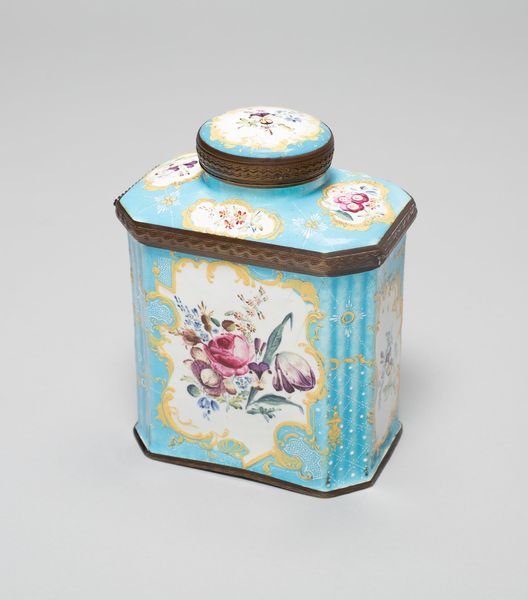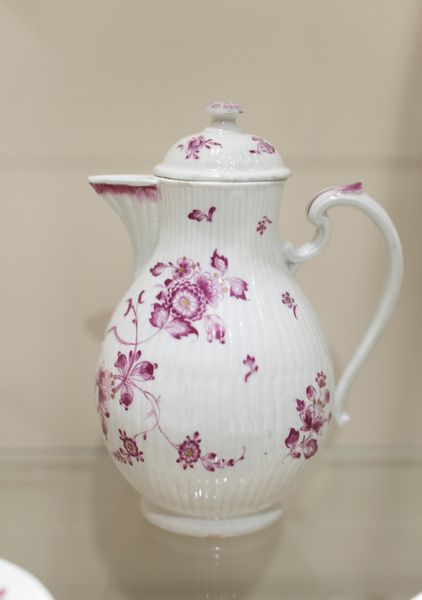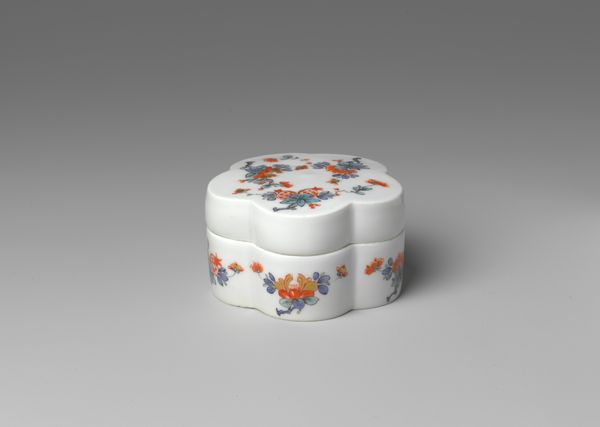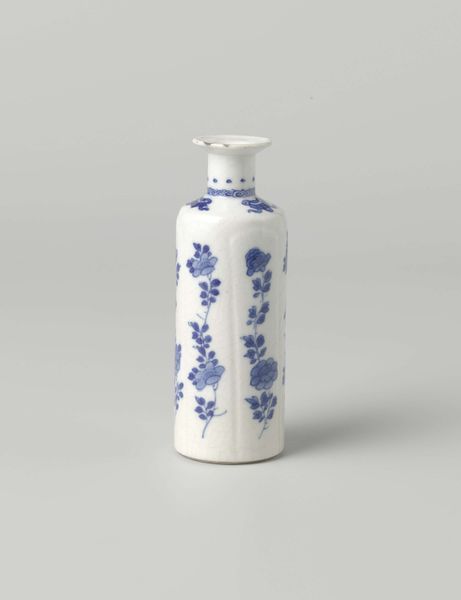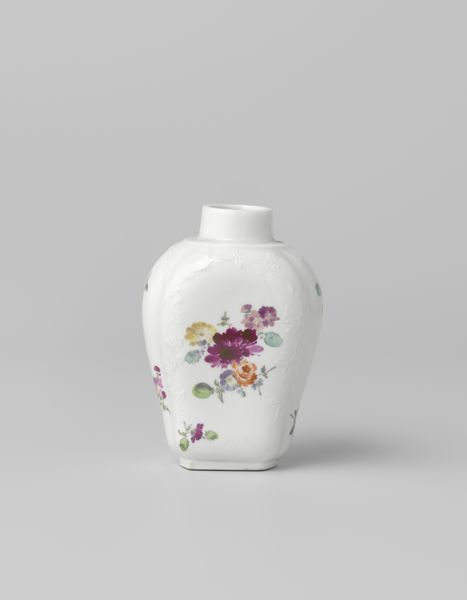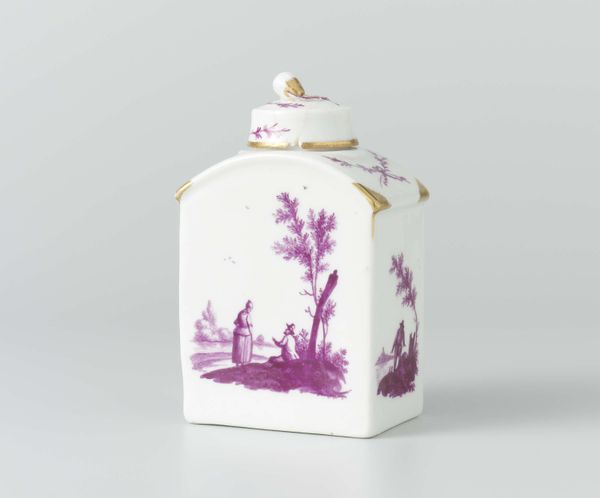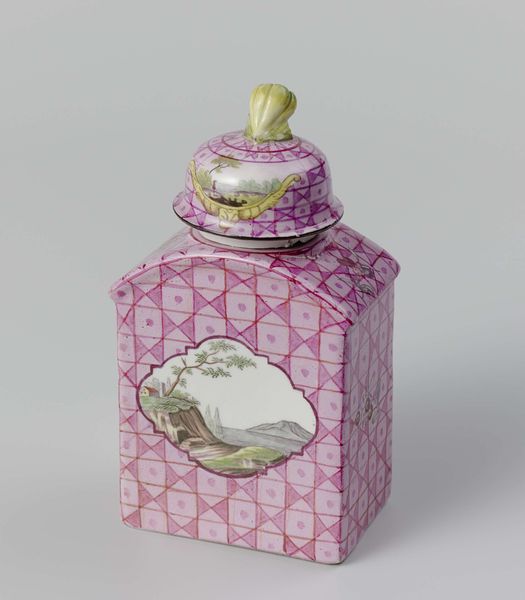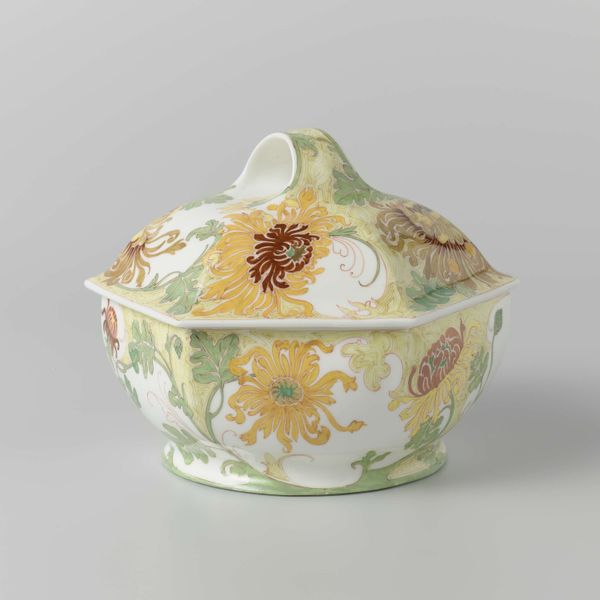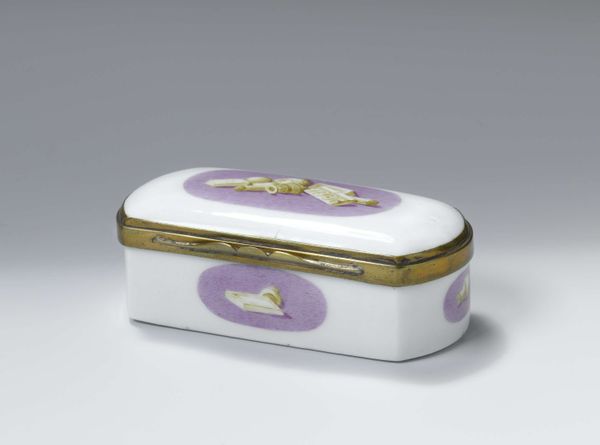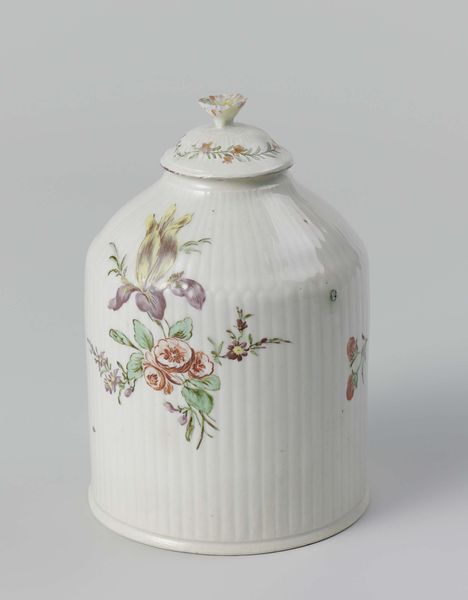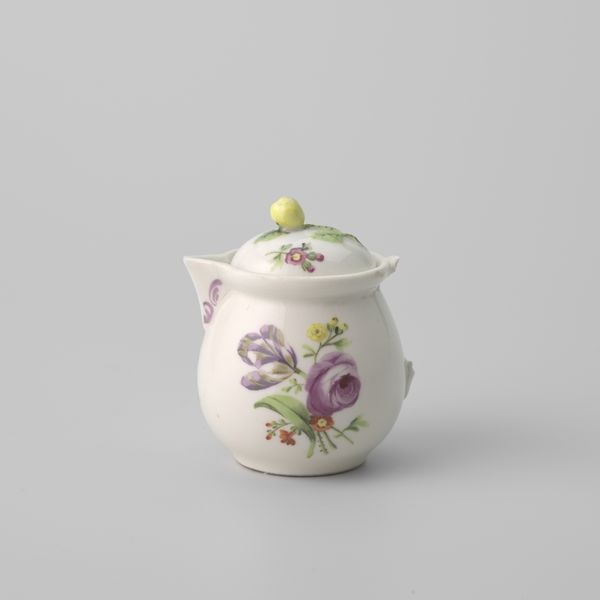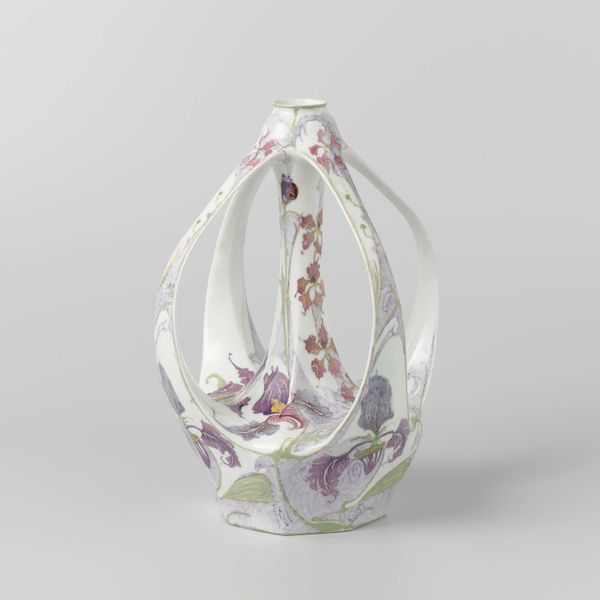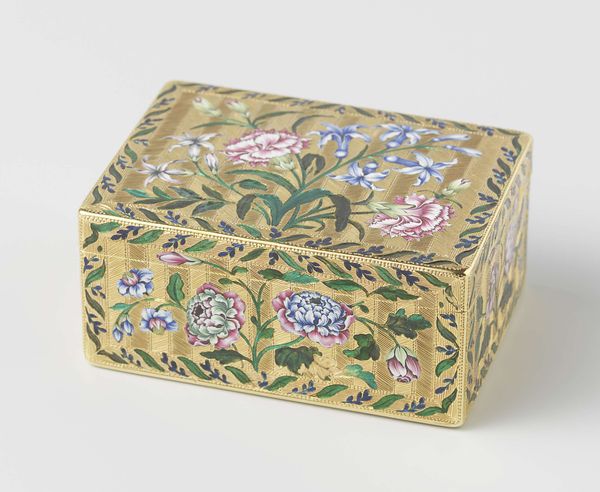
ceramic, porcelain
#
still-life-photography
#
ceramic
#
porcelain
#
ceramic
#
decorative-art
#
erotic-art
#
rococo
Dimensions: 4 1/4 x 2 7/8 x 1 1/2 in. (10.8 x 7.3 x 3.81 cm)
Copyright: Public Domain
Editor: Here we have a porcelain tea caddy from around the 18th century, currently housed in the Minneapolis Institute of Art. The floral design, rendered in a delicate mauve, gives it a surprisingly modern feel, even though it's centuries old. What are your impressions? Curator: The floral motifs aren’t merely decorative. Notice the type of flowers represented. Do they remind you of any particular region or artistic movement? And what feelings do the flowers elicit for you? Editor: I suppose the style nods to Asian influence... something vaguely chinoiserie? Maybe they trigger associations of peace and tranquility. Curator: Precisely! In the 18th century, such imagery symbolized luxury and exoticism, connecting tea consumption with idealized notions of the Orient. But let’s also think about the vessel itself. Tea was incredibly valuable. The caddy wasn't just a container; it was a symbol of status, kept under lock and key by the mistress of the house. Consider its protective function: what sort of emotions does this functionality imply? Editor: That’s fascinating. It highlights the social rituals and hierarchies surrounding tea in that era. The tea caddy became a statement piece and status symbol, but the floral decoration adds a layer of meaning beyond simple wealth. I now view it in an entirely new light! Curator: Exactly. By examining the symbols and cultural context, we unlock a deeper understanding of the object and its role in society. Editor: It's remarkable how a single object can reveal so much about cultural values and societal norms. Thanks so much!
Comments
No comments
Be the first to comment and join the conversation on the ultimate creative platform.
